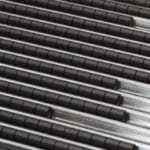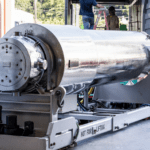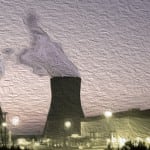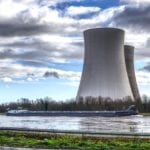The first complete accident-tolerant fuel (ATF) assembly is now operational at Exelon’s Calvert Cliffs Nuclear Power Plant Unit 2 in Maryland, bringing an industry-led quest to accelerate commercialization of the new nuclear technology closer to fruition.
Inserted during the plant’s recent spring refueling outage, the lead fuel assembly (LFA) features a Framatome PROtect fuel design that was developed under the U.S. Department of Energy’s (DOE’s) Accident Fuel program. The pioneering LFA includes 176 chromium-coated rods and chromia-enhanced pellets that are “more tolerant to changes in reactor core temperatures increasing coping time, while reducing corrosion and the production of hydrogen under high-temperature conditions,” the French nuclear giant said.
According to the DOE, the advanced fuel will now operate in the reactor for the next four to six years and will be routinely inspected to monitor its performance. The Nuclear Regulatory Commission (NRC) in January amended Exelon’s Calvert Cliff operating license, allowing Exelon to install up to two Framatome PROtect lead test assemblies at the 1.9-GW nuclear plant’s two 860-MW pressurized water reactors for up to three cycles.
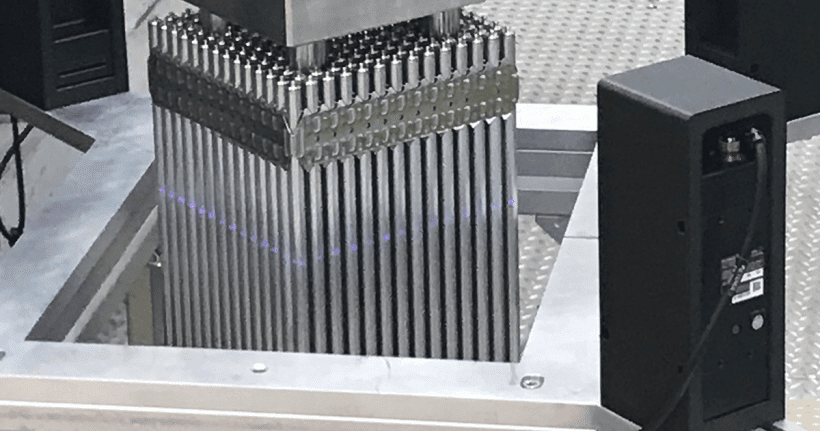
Framatome noted that the LFA was fabricated at its manufacturing facility in Richland, Washington, as part of a 2019 contract with Exelon Generation. However, the new fuel prototype builds on previous testing in the U.S., including an 18-month fuel cycle test, and Switzerland through Framatome’s PROtect program.“Loading the first complete accident tolerant fuel assembly is a huge milestone for Framatome and the nuclear energy industry,” said Lionel Gaiffe, senior executive vice president of Framatome’s Fuel Business Unit.
Frank Goldner, a nuclear engineer within DOE’s Office of Nuclear Energy, noted the milestone is also a triumph for Exelon and “the entire industry at large.” ATF, an industry concept used to describe new technologies in the form of new cladding and/or fuel pellet designs, has morphed into a key priority for the U.S. nuclear power industry because it promises to improve the existing nuclear fleet’s cost competitiveness in power markets that are increasingly inundated with cheap renewables and natural gas power. “Accident tolerant fuels are expected to enhance the performance of today’s reactors and will help fuel our future path to reaching net-zero emissions by 2050,” Goldner added.
ATFs Set for ‘Widespread’ Adoption by 2030
While ATF technologies have been under development since the early 2000s, they received a marked boost in the wake of the March 2011 Fukushima accident as the DOE aggressively implemented plans under its Congressionally mandated Enhanced Accident Tolerant Fuel (EATF) program to develop ATFs for existing light water reactors (LWRs). The DOE has said these technologies are being developed under an “accelerated timeframe,” owing mainly to the status of the nation’s current fleet of reactors. Earlier this year, the agency told POWER a private-public collaboration to commercialize ATFs is “still on track for initial commercial introduction of accident tolerant fuel by 2025.”
Backed by the DOE and monitored by the NRC, since spring 2018, GE’s Global Nuclear Fuel (GNF), Westinghouse, and Framatome have so far loaded lead test assemblies (LTAs) containing “near-term” ATF technologies at 10 U.S. nuclear plants. Tests of loaded fuel are ongoing or planned at another four nuclear plants.
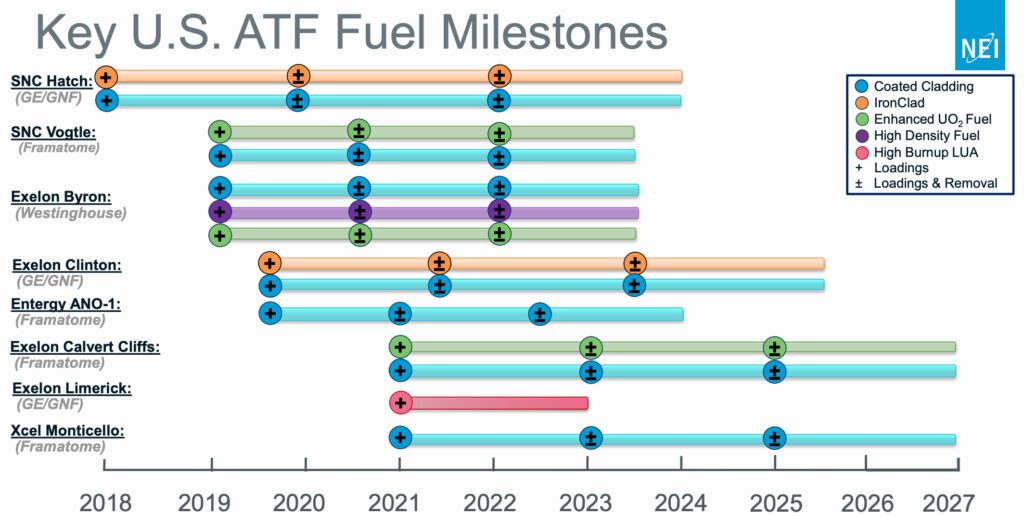
The DOE said on Tuesday all three vendors are “currently on track to have their accident tolerant fuels ready for batch loading by the mid-2020s and with commercial widespread adoption by 2030.”
A Brief Recap of ATF Achievements
So far, GNF has tested several different iron-chromium-aluminum (FeCrAl) alloys for cladding. In December 2020, Oak Ridge National Laboratory said it received the first GNF-developed nuclear fuel test rods, which spent 24 months at Southern Co.’s Edwin Hatch nuclear plant. The test samples feature IronClad, an FeCrAl fuel cladding, and ARMOR, a hard, oxidation-resistant coating layered on top of zirconium cladding with uranium oxide (UO2) fuel (which GNF originally created outside of the DOE’s ATF program).
Framatome, meanwhile, is working to commercialize a near-term ATF design that involves chromium-coated zirconium alloy cladding with chromia (Cr2O3)–doped UO2 fuel. Four GAIA LTAs containing Framatome’s advanced chromium coating (which is added to its proprietary M5 zirconium alloy cladding) and the chromia-doped pellets were removed after an 18-month cycle at Southern Co.’s Vogtle 2 plant in August 2020. Two other 18-month cycles of operation for the LTAs are planned. Framatome’s concepts are also being tested at Entergy’s Arkansas Nuclear One (ANO) Unit 1. In the fall of 2019, ANO Unit 1 inserted 32 Framatome Cr-coated lead test rods. The full assembly inserted at Calvert Cliffs this spring includes Cr-coated M5 cladding and Cr2O3-doped UO2 fuel.
Westinghouse is also testing several “near-term” technologies developed under its EnCore Fuel brand. These include “improved chromium-coated cladding that inhibits the zirconium-steam reaction and increases maximum temperature by an additional 300C,” as well as Westinghouse’s proprietary ADOPT fuel pellets, which are chromia and alumina (Cr2O3 + Al2O3)—doped UO2. The additives in the doped fuel “facilitate greater densification and diffusion during sintering, resulting in a higher density and an enlarged grain size as compared to undoped UO2,” the company said in topical report that the NRC accepted for review in September 2020.
—Sonal Patel is a POWER senior associate editor (@sonalcpatel, @POWERmagazine).







